its paid sponsors, whose products you need!
| Home |
| Intro |
| Current Issue |
|
Mailing List |
| Store |
| Strength |
| Subscriber Content |
| ARCHIVES
|
| Martialism |
| Pacifism |
| Q & A |
| Cunning-Hammery |
| Advertise With Us |
| Submit An Article |
| Staff |
| Discussion Forum |
| Links |
“Stay ‘unreasonable.’ If you
don’t like the solutions [available to you], come up with your
own.”
Dan Webre
The Martialist does not
constitute legal advice. It is for ENTERTAINMENT
PURPOSES ONLY.
Copyright © Phil Elmore,
all rights
reserved.
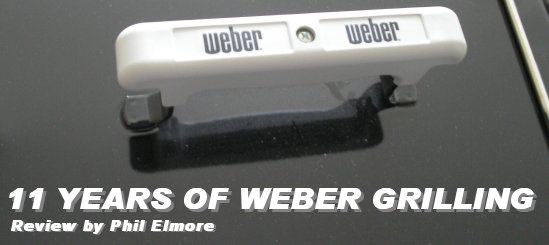
The ability to cook food anywhere — at home, on the
go, while camping, whatever — is a definite advantage to the
survivalist, prepared martialist, and tailgate party-goer. If you enjoy
grilling during the summer months (or you’ve had no other choice for
cooking dinner when the power is out, something I’ve faced once or
twice), you can use a charcoal grill (messy, time-consuming, and
imprecise) or you can use a propane grill. I think every household
should have a portable propane grill and small tank of propane fuel on
hand for emergencies (and picnics). I say this having used such a grill
every summer for the past eleven years.
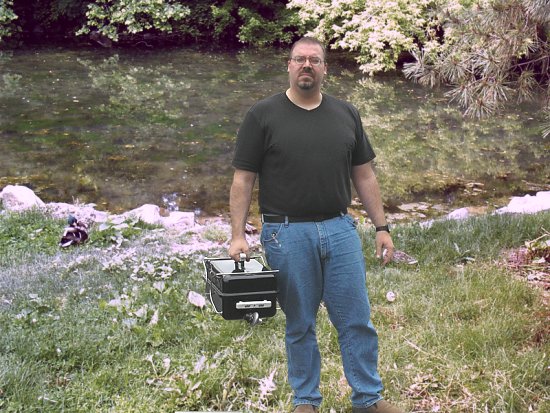
When I was growing up, my father had an old charcoal
grill that he used in the summer. He was a wizard when it came to
seasoning hamburgers and searing hotdogs (I later learned that the
secret to his burgers was a double dose of onion and garlic powders).
As most suburban boys do, I have vivid memories of my father spraying
lighter fluid directly onto the grill when it wasn’t heating up fast
enough. That fireball was irresistible to the little pyromaniac in me
and I never forgot it. When the charcoals were just the right color, it
was time to grill — and then we’d have to wait to clean up the old
metal monster until it had cooled sufficiently to dump the smoldering
ashes. Years later, Dad would upgrade to the biggest stainless steel
propane-powered grill I have ever seen. I don’t think I would trade my
childhood charcoal memories, though.
My own grilling career has been decidedly less
flamboyant. Eleven years ago, I received my first portable
propane-powered Weber grill as a wedding present. Of all the gifts my
lovely wife and I received, I don’t think a single gift saw as much use
for as many years as did that handy little grill. We did our first
grilling on the cement stoop of the back door to our first apartment.
Later, after making sure it wasn’t against any rules, we started
grilling in the park for full-fledged picnics — which would become a
beloved summertime tradition for us. For eleven years, that Weber grill
went everywhere with us over the summer, often spending the summer
months in the trunk of our car. It grilled up everything we ever
presented to it, including some experiments with grilled vegetables. It
served faithfully and never malfunctioned, working perfectly for a
decade (plus one).
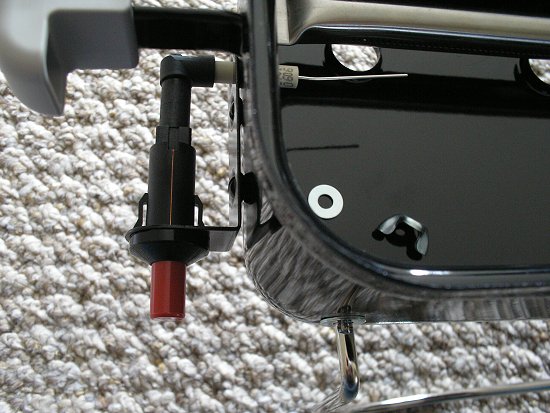
Installing the ignition assembly on the author’s new Weber grill.
This summer, I went to light the little grill, whose
piezoelectric igniter saved me from monkeying about with matches or
flames for those eleven years. Try as I might, I could not get the
grill to ignite. Our our picnic was salvaged when I simply used a
disposable butane lighter to ignite it manually, but I thought eleven
years was more than acceptable as a service life for such a tool. I
went online, found the same grill at Amazon.com
(after a fruitless search locally, turning up only cheap Chinese
imports that one must light by hand with open flame), and purchased it
for less than $50 USD.
The Go-Anywhere Grill is an enameled metal box,
essentially. The top lifts off completely and has a handle built into
the top. There are two handles on either side of the bottom portion of
the box, too. In the bottom half are mounted folding metal feet, not to
mention the piezoelectric ignition assembly and gas tube. A vented
“Flavorizer bar” is placed on top of the gas tube (it sits there,
loosely, held only by gravity) and the 160-square-inch nickel-plated
cooking grate is placed in its recess on top of that. It is my
understanding that the “Flavorizer” helps distribute heat, or some such
thing, eliminating the need for lava rocks or other affectations. In
practice, how well this works is questinoable, but we’ll get to that.
Overall product dimensions are listed as “23.8 x 12.4 x 8.9 inches,”
with a shipping weight of roughly 15 pounds.
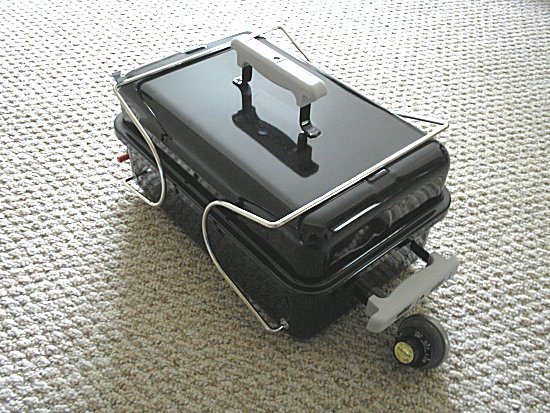
Assembled grill packed for travel. The legs retain the cover.
When I opened the cardboard box in which the new grill
shipped, I was immediately surprised at how many components were to be
found inside. I have no memory of assembling our first Weber grill and
it is possible that it was given to us assembled (either from the
factory or as assembled by the well-meaning relative who gave it to us
for our wedding). I absolutely despise assembling things I have
purchased. Every time I do I flash back to what it was like to assemble
our computer desk, which shipped separated into so many pieces that
you’d have had to split it at the molecular level in order to get it
into more components. Daunted but eager to have the grill up and
running, I got to work.
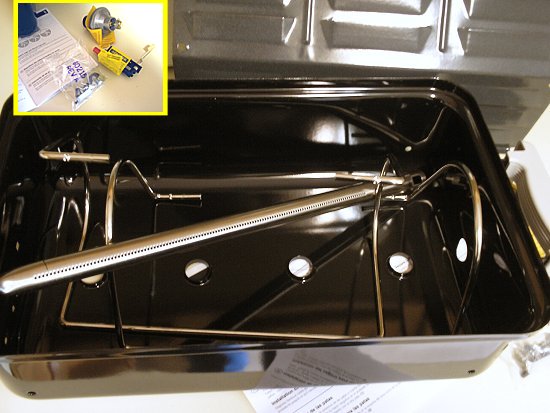
Unassembled grill comprises a daunting array of component parts.
The grill was actually fairly easy to assemble and
required no tools. I am still not sure just how it is that propane gas
technology is something you can stick in a metal box and expect to
work, but that’s exactly what it did. I installed the legs (including a
neat little rotating leg latch that keeps the legs from rolling out of
position when the grill is lifted — my first Weber grill did not have
this latch), installed the gas tube and ignition assembly, and clipped
the regulator into place with a single metal retainer. All the nuts
sued are wingnuts, so they can be turned by hand to sufficient
tightness.
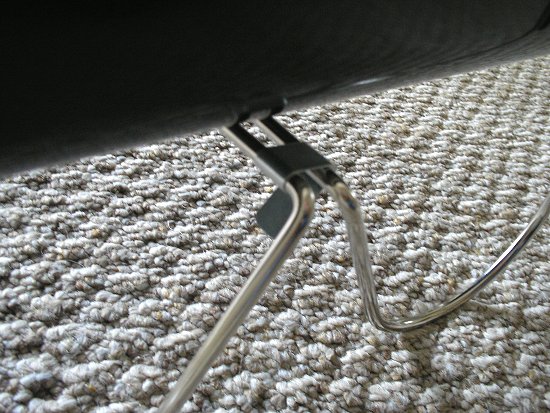
This little latch keeps the feet in position when they are opened.
The only adjustment I had to make myself was to the
ignition assembly, which is shipped “pre-bent” from the factory but was
no where near where it needed to be once installed. The trick is to get
the ignition wire just the right distance from the propane tube so that
a spark lights the gas promptly and effectively. I bent the wire by
hand with the knowledge that I might need to check it once “in the
field.”
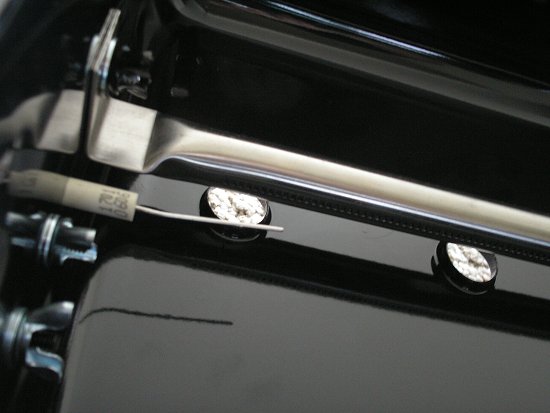
Ignition assembly must be positioned to put the spark rod (much closer than shown) to the gas tube.
Assembled out of the box, I noticed a few differences
compared to our original grill. As I’ve noted, there was a welcome leg
latch, which doesn’t feel all that sturdy but has worked fine so far.
There are also a couple of flanges inside the top cover for which I am
afraid to check the old grill. You see, these flanges allow the grill
lid to be suspended at an angle from the side of the grill bottom. If
our old grill had them, I didn’t know what they were intended to do and
I never used them for this. I couldn’t miss them when reading the
assembly directions for the new grill, however, and have happily placed
the grill top on the side of the box ever since.
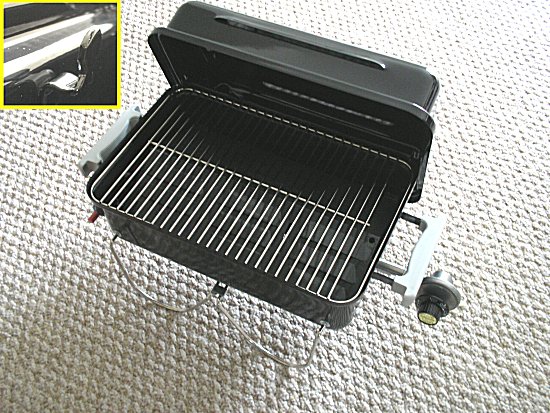
The Weber grill open for duty, with the cover resting on the catches provided.
Our first Weber grill had wooden handles, but this new
grill has handles of gray plastic. Fit and finish doesn’t seem quite as
solid as on the previous grill; the grill top doesn’t fit as tightly
and the “Flavorizer” seems a lot more loose than it was on the old
grill.
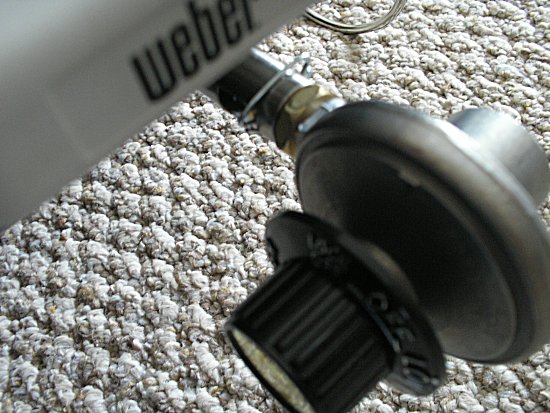
This simple metal clip is all that holds the gas regulator on the gas tube.
Our original grill lighted the first time and worked
without interruption for (as I’ve said repeatedly) eleven years. In
researching this latest incarnation of the grill, I noticed several
complaints by owners who said their grill did not light, or did not
light reliably. One review mentioned that gas tended to build up inside
the grill before finally igniting in a ball of fire. Keeping all this
in mind, I figured I might have to adjust the ignition assembly if I
hadn’t managed to get it right. I was also prepared for it not to work
at all — so I always pack a long “gas match” lighter in our cooler,
just in case.
On our first picnic with the new grill, I connected
the gas and pressed the ignition button a couple of times — only to
discover that I couldn’t tell if the grill was lighted or not. I took
off the Flavorizer, checked to see that I was getting a good spark, and
then tried again. The grill lighted right up and I think it did the
first time, too — I just couldn’t see it. On the second outing (the
very next day), it ignited immediately. On the third use, I pressed the
button several times and then heard the “whoosh” that indicates a
delayed ignition. I think it would be safe to say that the relatively
loose fit of the ignition assembly means the spark you get is a bit
variable. By keeping an eye on it while lighting, you can expect it to
function reasonably well, as mine has. It’s good sense to carry a gas
match so you can light it and continue your outing if it does fail, however.
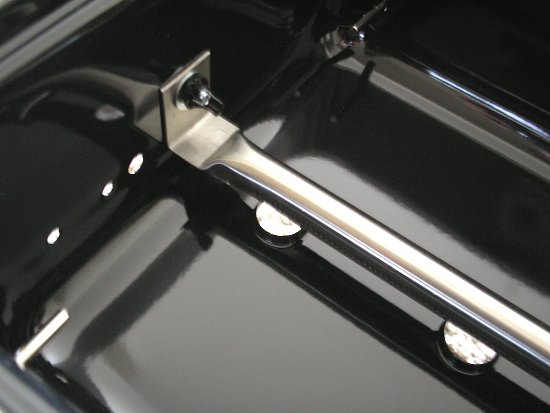
The entire grill is assembled using wing nuts. No tools are necessary.
As for the actual grilling, the Weber is a joy in terms
of convenience. It is easily portable and literally does “go anywhere.”
Our first grill traveled to many parks and other locales. Given its
small size, it can easily be powered by a single small propane
cannister. One cannister has lasted us through a season and then some
when used for nothing more than cooking veggie burgers and veggie dogs.
The grill surface definitely does have “hot spots” in which food cooks
more quickly than in others. Use the grill for any length of time and
you’ll quickly learn where these are. Once grilling is complete, the
grill cools down relatively quickly. Ours is usually cool enough to put
right back in the trunk of the car by the time we’ve finished eating
what we cooked in it.
The Weber Propane Gas Go-Anywhere Grill is literally
the only grill I’ve ever needed (or owned). After more than a decade of
service, it and its new replacement have left me a happy customer. The
new grill is obviously the victim of some “cost-downs” in the
intervening years, which is a sad fact of consumer products today, but
my new Weber grill has seen me through several picnics already and has
matched the performance (if not yet the endurance) of its predecessor.
I enthusiastically recommend this grill.
